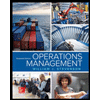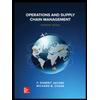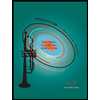Sarah Chang is the owner of a small electronics company. In six months, a proposal is due for an electronic timing system for the next Olympic Games. For several years, Chang’s company has been developing a new microprocessor, a critical component in a timing system that would be superior to any product currently on the market. However, progress in research and development has been slow, and Chang is unsure whether her staff can produce the microprocessor in time. If they succeed in developing the microprocessor (probability p1), there is an excellent chance (probability p2) that Chang’s company will win the $1 million Olympic contract. If they do not, there is a small chance (probability p3) that she will still be able to win the same contract with an alternative but inferior timing system that has already been developed. If she continues the project, Chang must invest $200,000 in research and development. In addition, making a proposal (which she will decide whether to do after seeing whether the R&D is successful) requires developing a prototype timing system at an additional cost. This additional cost is $50,000 if R&D is successful (so that she can develop the new timing system), and it is $40,000 if R&D is unsuccessful (so that she needs to go with the older timing system). Suppose now that this is a relatively big project for Chang. Therefore, she decides to use expected utility as her criterion, with an exponential utility function. Using some trial and error, see which risk tolerance changes her initial decision from “go ahead” to “abandon” when p1= 0.4, p2 = 0.8, and p3 = 0.1.
Sarah Chang is the owner of a small electronics
company. In six months, a proposal is due for an
electronic
timing system for the next Olympic
Games. For several years, Chang’s company has been
developing a new microprocessor, a critical component
in a timing system that would be superior
to any product currently on the market. However,
progress in research and development has been
slow, and Chang is unsure whether her staff can
produce the microprocessor
in time. If they succeed
in developing the microprocessor (probability
p1), there is an excellent chance (probability p2) that
Chang’s company will win the $1 million Olympic
contract. If they do not, there is a small chance
(probability p3) that she will still be able to win the
same contract with an alternative but inferior timing
system that has already been developed.
If she continues the project, Chang must invest
$200,000 in research and development. In addition,
making a proposal (which she will decide whether
to do after seeing whether the R&D is successful)
requires developing a prototype timing system at an
additional cost. This additional cost is $50,000 if R&D
is successful (so that she can develop the new timing
system), and it is $40,000 if R&D is unsuccessful (so
that she needs to go with the older timing system).
- Suppose now that this is a relatively big project for Chang. Therefore, she decides to use expected utility as her criterion, with an exponential utility function. Using some trial and error, see which risk tolerance changes her initial decision from “go ahead” to “abandon” when p1= 0.4, p2 = 0.8, and p3 = 0.1.
Trending now
This is a popular solution!
Step by step
Solved in 2 steps with 1 images









